Cooking with essential oils is revolutionizing culinary arts, and CONDUCT.EDU.VN is here to guide you through it. This comprehensive guide explores the safe and effective use of essential oils in cooking, enhancing flavors and offering unique culinary experiences. Discover how to transform your dishes with the power of natural essences, all while adhering to the highest standards of safety and flavor integrity; explore natural flavorings, aromatic infusions, and culinary aromatherapy.
1. Understanding the Fundamentals of Essential Oils in Cooking
A food-grade essential oil is a concentrated, aromatic extract derived from plants through distillation or cold pressing. These oils must meet strict quality and purity standards, similar to those used for therapeutic purposes, to ensure they are safe and effective for culinary use. The rise in popularity of essential oils for cooking can be attributed to their potent flavors and natural origins, appealing to both professional chefs and home cooks seeking to enhance their dishes with intense, authentic tastes.
1.1 Essential Certifications for Culinary Essential Oils
It is paramount to use only certified organic and food-grade essential oils. These certifications guarantee that the oils have been produced and tested to meet stringent standards for purity and safety. Look for labels that indicate compliance with recognized organic certification bodies and food-grade standards. This ensures that the oils are free from contaminants and are safe for consumption.
1.2 Essential Equipment for Cooking with Essential Oils
Precision is key when working with essential oils in the kitchen. Essential tools include:
- Graduated Pipettes: For accurate measurement and dispensing of essential oils.
- Amber Glass Containers: To protect essential oils from light and preserve their quality.
- Precision Scales: For measuring ingredients accurately to maintain the balance of flavors.
- Tracking Journal: To record successful dosages and combinations for future reference.
2. Exploring Winning Combinations for Savory Cooking
Essential oils offer a diverse palette of flavors that can elevate both traditional and innovative dishes. Understanding how different essential oils interact with various ingredients is crucial for creating harmonious and balanced culinary creations.
2.1 Mediterranean Essential Oils: A Culinary Staple
The Mediterranean region boasts an array of aromatic plants that can be captured in essential oil form. These oils offer intense flavors that enhance a variety of dishes.
- Basil Essential Oil: Adds a fresh, vibrant note to tomato sauces and marinades. A single drop can transform the flavor profile of 250ml of sauce.
- Thyme Essential Oil: Pairs exceptionally well with roasted meats and olive oil, adding depth and warmth.
- Rosemary Essential Oil: Enhances roasted potatoes with its robust, herbaceous aroma. Incorporate one drop into 100ml of olive oil before coating the potatoes for an unforgettable flavor.
2.2 Exotic Essential Oils: Adding Global Flair
Exotic essential oils can introduce unique and exciting flavors to your cooking.
- Ginger Essential Oil: Elevates poultry marinades with its warm, spicy notes.
- Citronella Essential Oil: Imparts a refreshing, citrusy aroma to Asian broths, creating a light and invigorating taste.
2.3 Essential Stock Management Benefits
Using essential oils can simplify inventory management in professional kitchens:
- Reduce Fresh Herb Waste: Essential oils have a longer shelf life than fresh herbs.
- Consistent Year-Round Quality: Essential oils maintain their flavor profile regardless of the season.
- Optimize Storage Space: Essential oils require less storage space than fresh herbs.
3. Practical Applications: Starting Recipes with Essential Oils
Mastering the use of essential oils in cooking involves understanding their potency and how to incorporate them effectively into recipes. Below are some signature marinades and sauces that highlight the versatility of essential oils in professional cooking.
3.1 Mediterranean Marinade Recipe
- 100ml olive oil
- 1 drop thyme essential oil
- 1 drop rosemary essential oil
- Fleur de sel
Instructions: Combine all ingredients and use to marinate meats or vegetables.
3.2 Citrus Signature Sauce Recipe
- 200ml fresh cream
- 1 drop lemon essential oil
- 1 drop basil essential oil
- Salt and freshly ground pepper
Instructions: Mix all ingredients and use as a sauce for fish or vegetables.
3.3 Signature Lamb Marinade Recipe
- 100ml olive oil
- 2 drops rosemary essential oil
- 1 drop thyme essential oil
- Fleur de sel
Instructions: Marinate lamb for at least 12 hours to allow the essential oils to fully infuse the meat.
3.4 Mediterranean Signature Sauce Recipe
- 200ml fresh cream
- 1 drop basil essential oil
- 1 drop thyme essential oil
- Salt and freshly ground pepper
Instructions: Incorporate essential oils at room temperature to preserve their aromas.
3.5 Signature Three-Oil Broth Recipe
Instructions: Experiment with different combinations of essential oils to create a unique broth. For example, try a blend of ginger, lemongrass, and cilantro essential oils for an Asian-inspired broth.
4. Expert Dosage Guide: Mastering the Art of Flavor
Achieving the perfect flavor balance with essential oils requires a precise understanding of dosage. The potency of essential oils means that even a slight excess can overwhelm a dish.
4.1 Practical Equivalences
Understanding the concentration of essential oils compared to fresh herbs can help guide your usage.
- A 5ml bottle of thyme essential oil can replace approximately 750g of fresh thyme.
4.2 Golden Rules of Dosage
- Never exceed 1-2 drops of essential oil per 250ml of preparation.
- Always dilute essential oils in a fatty base before incorporating them into a recipe.
4.3 Recommended Dilutions
| Preparation Type | Recommended Dosage |
|---|---|
| Marinade | 1-2 drops/100ml oil |
| Cold Sauce | 1 drop/250ml |
| Broth | 1-2 drops/500ml |
| Vinaigrette | 1 drop/100ml |
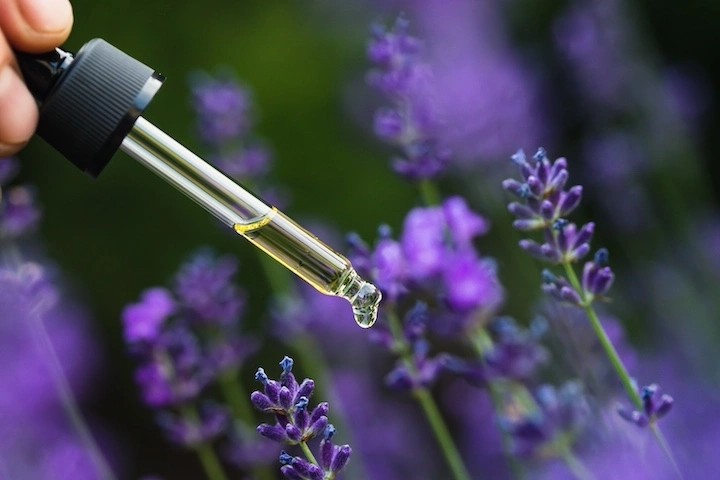
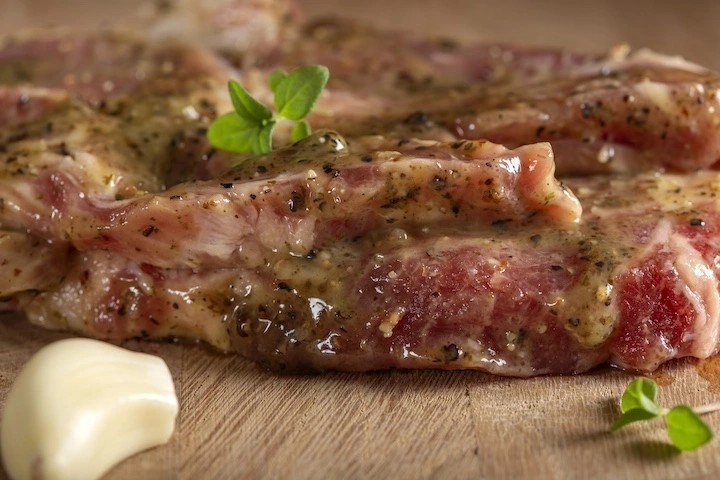
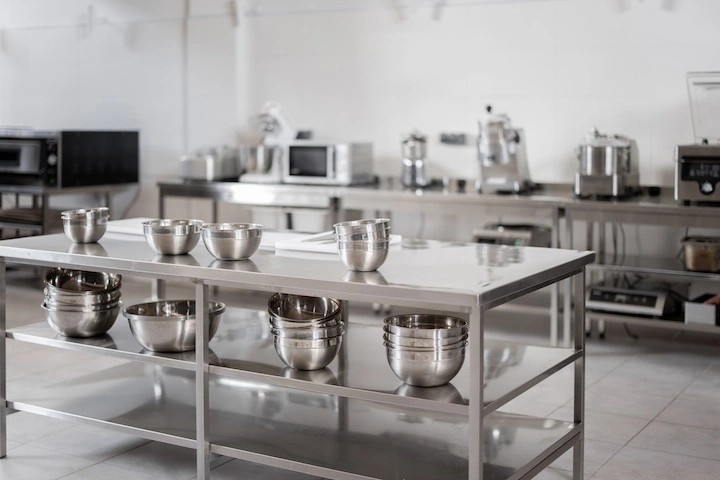
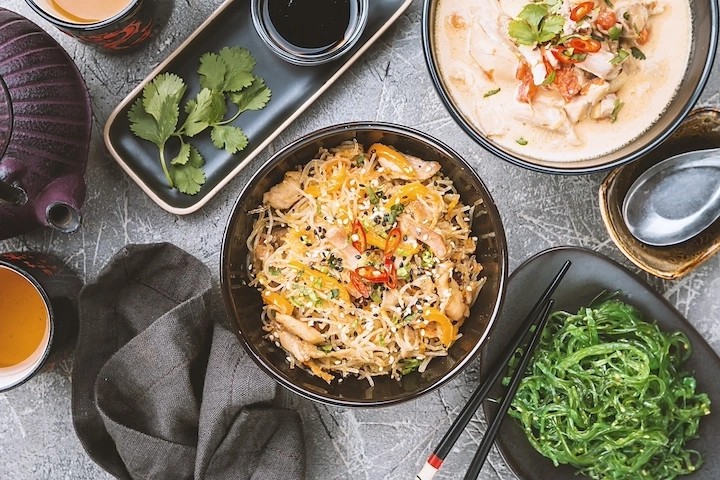

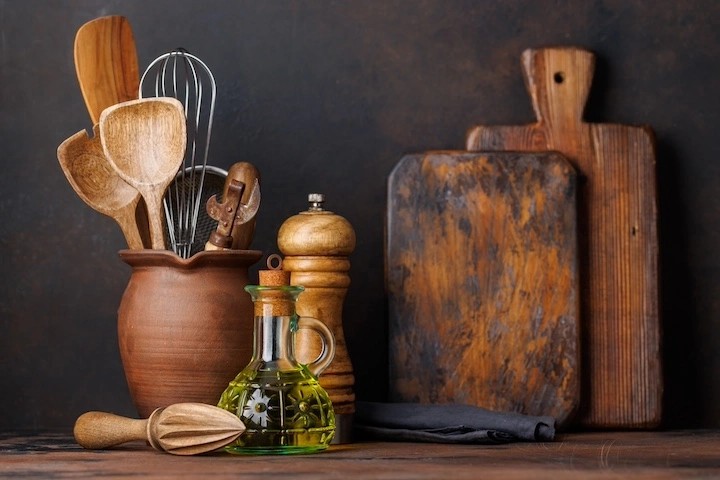
4.4 Common Mistakes to Avoid
- Overdosing: Using too much essential oil can ruin a dish.
- Direct Incorporation Without Dilution: Essential oils should always be diluted in a carrier oil or other fatty substance before adding them to a recipe.
- Using in Preparations That Are Too Hot: High temperatures can degrade the flavor and aroma of essential oils.
5. Further Exploration of Winning Combinations for Savory Cooking
Expanding your knowledge of essential oil pairings can lead to exciting culinary discoveries. Consider the following combinations to enhance your savory dishes.
5.1 Mediterranean Essential Oils: The Holy Trinity
Basil, thyme, and rosemary form the foundation of Mediterranean cuisine.
- Basil essential oil elevates tomato sauces, adding a fresh, herbaceous note.
- Rosemary essential oil transforms grilled meat, providing a robust and aromatic flavor.
5.2 Exotic Essential Oils: A Taste of Asia
Citronella and ginger essential oils are essential for creating authentic Asian flavors.
- A Thai broth infused with one drop of citronella and half a drop of ginger essential oil offers a delicate and invigorating taste.
5.3 The Layering Technique: Building Depth of Flavor
The “layering” technique involves adding essential oils at different stages of the cooking process to create a complex and nuanced flavor profile.
Example: Mediterranean Dish
- Base: Infuse olive oil with thyme essential oil.
- Middle: Add rosemary essential oil to the meat marinade.
- Finish: Sprinkle fresh basil leaves on top before serving.
This method allows each aromatic note to shine at different moments, creating a richer and more satisfying dining experience.
6. Safety and HACCP Protocols: Ensuring Culinary Excellence
Maintaining food safety is paramount when using essential oils in cooking. Adhering to Hazard Analysis and Critical Control Points (HACCP) standards is essential for ensuring the safety and quality of your dishes.
6.1 Storage Protocols
- Store essential oils in airtight amber glass containers to protect them from light and air.
- Maintain a constant temperature between 15 and 20°C (59 and 68°F) to preserve their integrity.
- Protect essential oils from direct light and humidity.
- Label each container with the opening date to track its freshness.
6.2 Usage Tracking
Maintain a detailed register of essential oil usage, including:
- Date of use
- Essential oil name
- Batch number
- Quantity used
- Dish concerned
This traceability is essential for ensuring food safety and maintaining quality standards.
6.3 Staff Training
Proper training is crucial for ensuring that staff understand the safe and effective use of essential oils.
- Conduct theoretical sessions on essential oil properties and safety.
- Organize practical dosage workshops to teach accurate measurement and dilution techniques.
- Provide regular knowledge updates on best practices and new research.
- Implement periodic competency tests to ensure understanding and compliance.
7. Essential Oils in Cooking: Mastering an Art
Using essential oils in savory cooking opens up a world of refined flavors, but it requires caution and precision. By adhering to the principles of dosage, incorporation, and storage, you can elevate your dishes and create memorable culinary experiences.
7.1 Key Points to Remember
- Always choose food-grade certified essential oils from reputable suppliers.
- Start with minimal dosages (1-2 drops) to avoid overpowering the dish.
- Document your experiments to refine your techniques and identify successful combinations.
- Train your team in best practices to ensure consistency and safety.
7.2 Getting Started
Begin with Mediterranean essential oils like basil or thyme, which are easier to master. Once you are comfortable with these, venture into more exotic flavors like citronella or ginger.
8. Why Choose Landema.com for Essential Oils
Selecting the right supplier is crucial for sourcing high-quality essential oils. Landema.com offers several compelling advantages for professional chefs.
8.1 Professional Quality Assurance
- Certified organic and food-grade products ensure safety and purity.
- Complete production-to-delivery traceability provides transparency and accountability.
- Systematic quality testing for each batch guarantees consistent quality.
8.2 Culinary Expertise
- Specially curated range for professional kitchen use.
- Accessible customer support via phone or email.
8.3 Optimal Cost-Effectiveness
- Superior value for money compared to fresh herbs.
- Professional packaging options in various sizes.
- Maximum shelf life through high-protection bottles.
Join the community of chefs who trust Landema.com to elevate their culinary creations. Discover their range of certified essential oils for professional cooking by using the “Professional uses / Aroma – Food filter” on their online store.
9. Bonus: Chef Thibaud’s Favorite Recipes
Here are a few recipes to get you started on your essential oil culinary journey.
9.1 Citrus-Basil Vinaigrette Recipe
Ingredients:
- 5 tablespoons olive oil
- 1 tablespoon balsamic vinegar
- 1-2 drops lemon essential oil
- 1 drop basil essential oil
- Salt and pepper
Instructions:
- Mix all ingredients in a bowl.
- Use to dress salads.
9.2 Mint-Lemonade Infusion Recipe
Ingredients:
- 1 liter water
- 2 drops peppermint essential oil
- 1-2 tablespoons honey (optional)
- Lemon slices
Instructions:
- Heat water and add remaining ingredients.
- Let infuse for a few minutes before serving chilled.
9.3 Orange-Lavender Cake Recipe
Ingredients:
- 250g flour
- 150g sugar
- 100g melted butter
- 3 eggs
- 2 drops sweet orange essential oil
- 1 drop true lavender essential oil
- 1 packet baking powder
- Pinch of salt
Instructions:
- Preheat oven to 180°C (350°F).
- Mix flour, baking powder, and salt.
- Beat eggs with sugar, add melted butter and essential oils.
- Combine wet and dry ingredients.
- Bake for 30-35 minutes.
9.4 Roasted Vegetables with Rosemary Recipe
Ingredients:
- 500g mixed vegetables (carrots, zucchini, potatoes)
- 2 tablespoons olive oil
- 2 drops rosemary essential oil
- Salt and pepper
Instructions:
- Preheat oven to 200°C (400°F).
- Cut vegetables into pieces.
- Toss with olive oil, rosemary essential oil, salt, and pepper.
- Mix and roast for 25-30 minutes.
10. More of Chef Thibaud’s Favorite Recipes
10.1 Basil Tomato Soup Recipe
Ingredients:
- 800g peeled tomatoes
- 1 onion
- 2 garlic cloves
- 1 tablespoon olive oil
- 1-2 drops Landema basil essential oil
- Salt and pepper
- Fresh basil for garnish
Instructions:
- Sauté minced onion and garlic until golden.
- Add tomatoes and simmer for 15 minutes.
- Blend until smooth.
- Add basil essential oil, season to taste.
- Serve hot with fresh basil.
10.2 Lavender Panna Cotta Recipe
Ingredients:
- 400ml heavy cream
- 100ml milk
- 70g sugar
- 2 gelatin sheets
- 1 drop Landema true lavender essential oil
- Fresh berries for topping
Instructions:
- Soften gelatin in cold water.
- Heat cream, milk, and sugar until dissolved.
- Remove from heat, add drained gelatin.
- Stir in true lavender essential oil.
- Pour into ramekins and refrigerate for 4 hours.
- Serve with fresh fruit.
10.3 Orange-Ginger Smoothie Recipe
Ingredients:
- 2 peeled oranges
- 1 banana
- 200ml milk or almond milk
- 1 drop Landema sweet orange essential oil
- Fresh ginger or 1 drop ginger essential oil
Instructions:
- Blend all ingredients until smooth.
- Adjust sweetness if needed.
- Serve chilled with orange slice garnish.
10.4 Thyme-Infused Chicken Sauté Recipe
Ingredients:
- 500g diced chicken
- 2 tablespoons olive oil
- 1 diced onion
- 1 diced red pepper
- 2 drops Landema thyme essential oil
- Salt and pepper
Instructions:
- Heat olive oil in pan.
- Sauté onion and pepper until tender.
- Add chicken and cook until golden.
- Season with thyme essential oil, salt, and pepper.
- Serve with rice or pasta.
10.5 Orange-Scented Crêpes Recipe
Ingredients:
- 250g flour
- 3 eggs
- 500ml milk
- 2 tablespoons sugar
- 2 drops Landema sweet orange essential oil
- Butter for cooking
Instructions:
- Mix flour, eggs, and milk until smooth.
- Add sugar and sweet orange essential oil.
- Rest batter for 30 minutes.
- Cook in buttered pan until golden.
- Serve with sugar, honey, or fresh fruit.
11. Essential Oil Selection Guide
When selecting essential oils for culinary use, it is crucial to choose quality, 100% pure, and organic oils from reputable suppliers. Here are some culinary essential oils that are frequently used:
- Basil
- Thyme
- Rosemary
- Lemon
- Sweet Orange
- Ginger
- Citronella
- Peppermint
- True Lavender
12. FAQ: Essential Oils in Cooking
Q1: Are all essential oils safe for cooking?
No, only certified food-grade and organic essential oils should be used in cooking. These oils have been tested and approved for consumption.
Q2: How much essential oil should I use in a recipe?
Start with minimal dosages, typically 1-2 drops per 250ml of preparation. Adjust to taste, but be cautious, as essential oils are potent.
Q3: How should I store essential oils to maintain their quality?
Store essential oils in airtight amber glass containers at a constant temperature between 15 and 20°C, protected from direct light and humidity.
Q4: Can essential oils replace fresh herbs in recipes?
Yes, essential oils can replace fresh herbs, but they offer a more concentrated flavor. Use them sparingly and adjust the dosage to achieve the desired taste.
Q5: What are some common mistakes to avoid when cooking with essential oils?
Avoid overdosing, direct incorporation without dilution, and using essential oils in preparations that are too hot.
Q6: Where can I find high-quality essential oils for cooking?
Reputable suppliers like Landema.com offer certified food-grade and organic essential oils specifically curated for culinary use.
Q7: How do I dilute essential oils before adding them to a recipe?
Dilute essential oils in a fatty base, such as olive oil, cream, or butter, before incorporating them into a recipe.
Q8: Can I mix different essential oils to create unique flavor combinations?
Yes, experimenting with different combinations of essential oils can lead to exciting culinary discoveries. Start with complementary flavors and adjust to taste.
Q9: Is it safe to use essential oils in cooking during pregnancy or while breastfeeding?
It is best to consult with a healthcare professional before using essential oils in cooking during pregnancy or while breastfeeding.
Q10: How can I learn more about using essential oils in cooking?
CONDUCT.EDU.VN offers comprehensive guides and resources on the safe and effective use of essential oils in cooking. Additionally, consider taking culinary classes or workshops to learn from experienced chefs.
13. Discover More at CONDUCT.EDU.VN
Navigating the world of culinary essential oils can be both exciting and challenging. At CONDUCT.EDU.VN, we understand the need for clear, reliable information to help you succeed. Whether you are a seasoned chef or a home cooking enthusiast, our resources are designed to provide you with the knowledge and confidence to explore new flavors and techniques safely.
13.1 Addressing Customer Challenges
Many individuals face difficulties in finding trustworthy information about essential oils and their culinary applications. The abundance of sources can be overwhelming, leading to confusion about proper usage, safety precautions, and effective flavor combinations.
13.2 How CONDUCT.EDU.VN Can Help
CONDUCT.EDU.VN offers a wealth of detailed and easy-to-understand information on essential oils in cooking. Our resources include:
- Comprehensive Guides: Covering essential oils, safety, and cooking techniques.
- Practical Examples: Illustrating how to use essential oils in various recipes.
- Expert Tips: Providing insights from experienced chefs and culinary professionals.
- Up-to-Date Information: Ensuring you have the latest knowledge on regulations and ethical standards.
13.3 Call to Action
Unlock the full potential of your culinary creations with the guidance of CONDUCT.EDU.VN. Visit our website at conduct.edu.vn to explore our extensive library of articles, recipes, and expert advice. Contact us at 100 Ethics Plaza, Guideline City, CA 90210, United States, or reach out via WhatsApp at +1 (707) 555-1234 for any inquiries.
14. Chef Thibaud Santacroce’s Professional Journey
Thibaud Santacroce is a seasoned culinary professional with over 15 years of experience, including five years as Head Chef. After completing his Advanced Technical Diploma in Hotel and Restaurant Management, he worked abroad under the mentorship of Paul Bocuse.
His culinary journey has taken him across the globe, from the United States to New Zealand, with significant stops in Australia and Switzerland. Santacroce’s culinary style represents a vibrant fusion of street food influences, blending American, Latin, Asian, and European cuisines. Since returning to France, he has been pursuing his dream of launching his own food truck, aspiring to introduce global flavors to discerning palates through his signature recipes that are simple, natural, and boldly flavored.
His passion for culinary innovation and dedication to natural ingredients has led him to become an expert in the use of essential oils in professional cooking, transforming ordinary dishes into extraordinary culinary experiences.